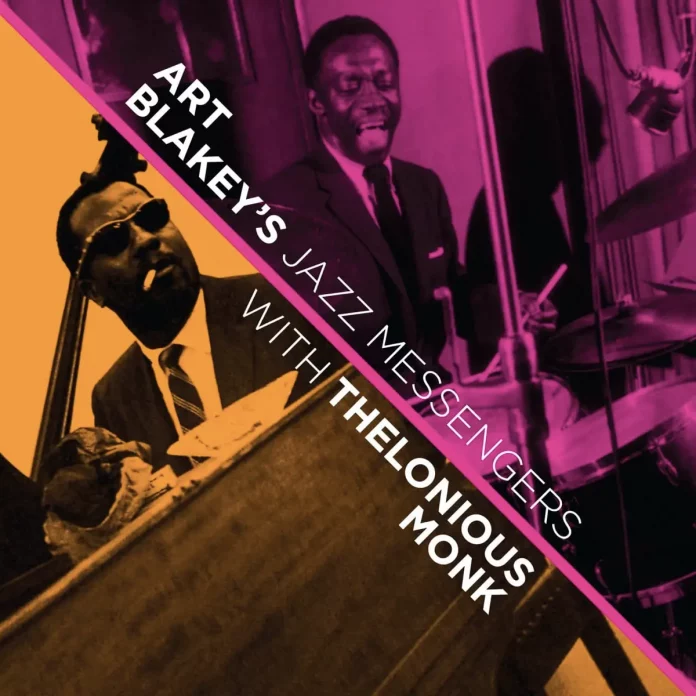When it was first released in 1958 this hard-bop album received critical praise; it continues to do so. It has appeared in various formats and with alternative or additional remastered takes. This recent addition also includes sessions (minus Monk) taken from their appearances on the TV show Stars Of Jazz in Los Angeles a month after the Monk/Blakey recording. Johnny Griffin was present on all three occasions.
In his liner notes to the original album Martin Williams stressed the strong relationship between Monk and Blakey, their empathy and mutual respect. Charles Boldt in his 2023 appraisal notes that Blakey was present on Monk’s first and final studio sessions in 1947 and 1952. Three Monk compositions – I Mean You, Blue Monk and Evidence – appear on the studio LP.
On the original album session the principals were joined by an on-form (if slightly subdued) Griffin, a nervous, extrovert trumpeter (Bill Hardman) and the competent bassist Spanky DeBrest. Eight of the well-known compositions were by Monk while Griffin contributed Purple Shades. The rapport between Monk and Blakey is incredible – a kind of running conversation between old friends. Hardman and DeBrest supply encouraging support throughout.
If anything, the previously unreleased bonus tracks are even better – despite the absence of Monk on I Mean You, Blue Monk and Evidence. The longest track, Bya-Ya/Epistrophy (11.54), recorded at the Five Spot, is probably the best. Griffin and Monk exchange ideas at a blistering rate (with a sparkling solo from Thelonious, a stunning display from Blakey, and pulsing bass from Abdul-Malik) before slipping into a brief Epistrophy, with Griffin stating the well-known theme.
Steve Voce in a Gramophone review hailed the original album as “a monument to both Monk and to the hard bop era. Monk’s tunes are built like Rome, and he and Blakey set up a continual onslaught of inspired creation, Griffin’s solos have a life of their own and it is only the young trumpeter to whom Blakey feels the need to give the occasional supercharging from the drums.”
Downbeat simply praised “another set combining Monk with a group not his own but that soon becomes his own”. If JJ still awarded stars (and to adapt a once well-known phrase) I’d give it six.
Discography
(1) Evidence; In Walked Bud; Blue Monk; I Mean You; Rhythm-A-Ning; Purple Shades; (2) Bya-Ya/Epistrophy; (3) I Mean You; Blue Monk; Evidence (65.33)
(1) Monk (p); Blakey (d); Johnny Griffin (ts); Bill Hardman (t); Spanky DeBrest (d). New York City, 14 & 15 May 1957.
(2) Johnny Griffin (ts); Monk (p); Ahmed Abdul-Malik (b); Blakey (d). Live at The Five Spot, New York, 9 July 1958.
(3) Art Blakey’s Jazz Messengers: same as (1) except Sam Dockery (p) replaces Monk. Stars Of Jazz TV show, Los Angeles, 29 July 1957.
American Jazz Classics 99156
















